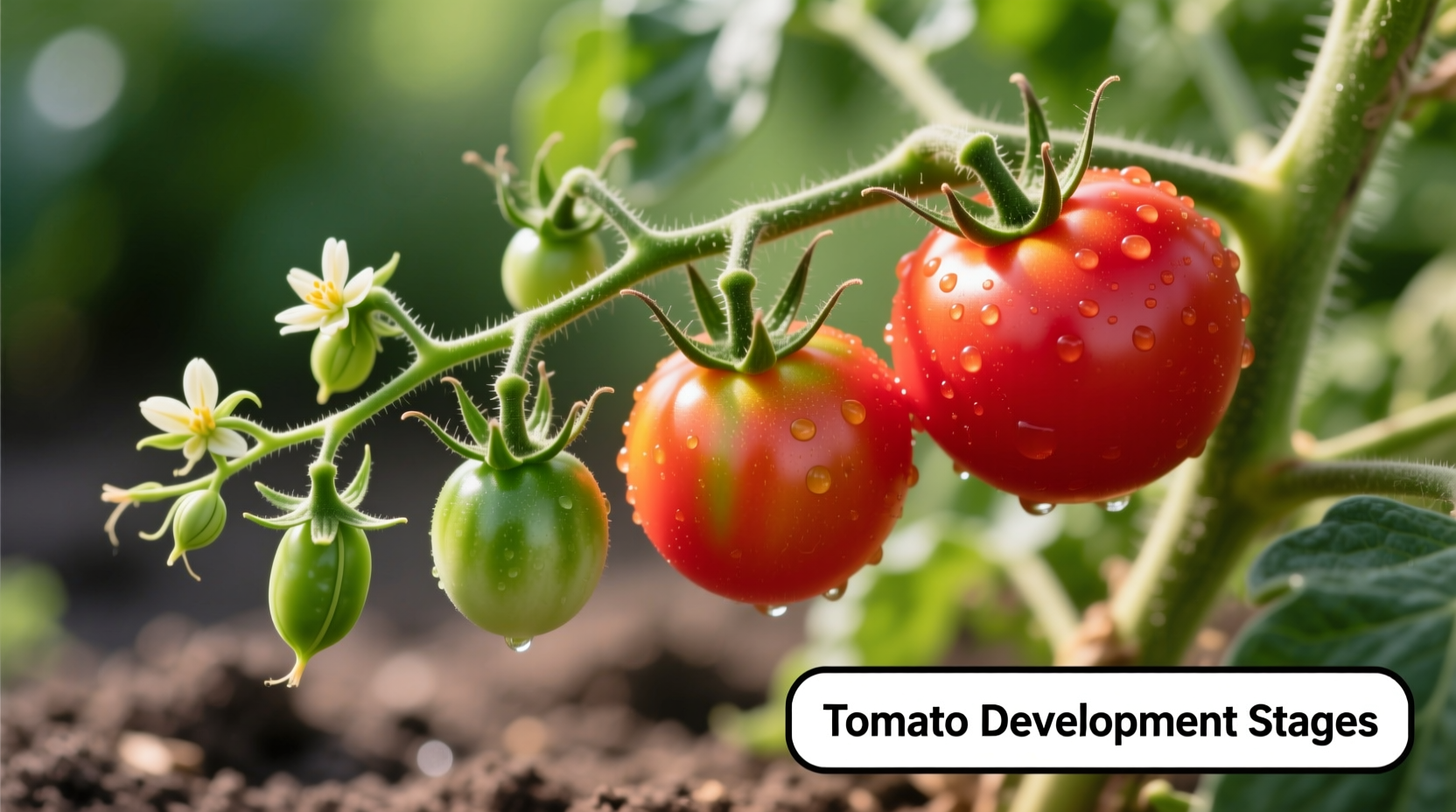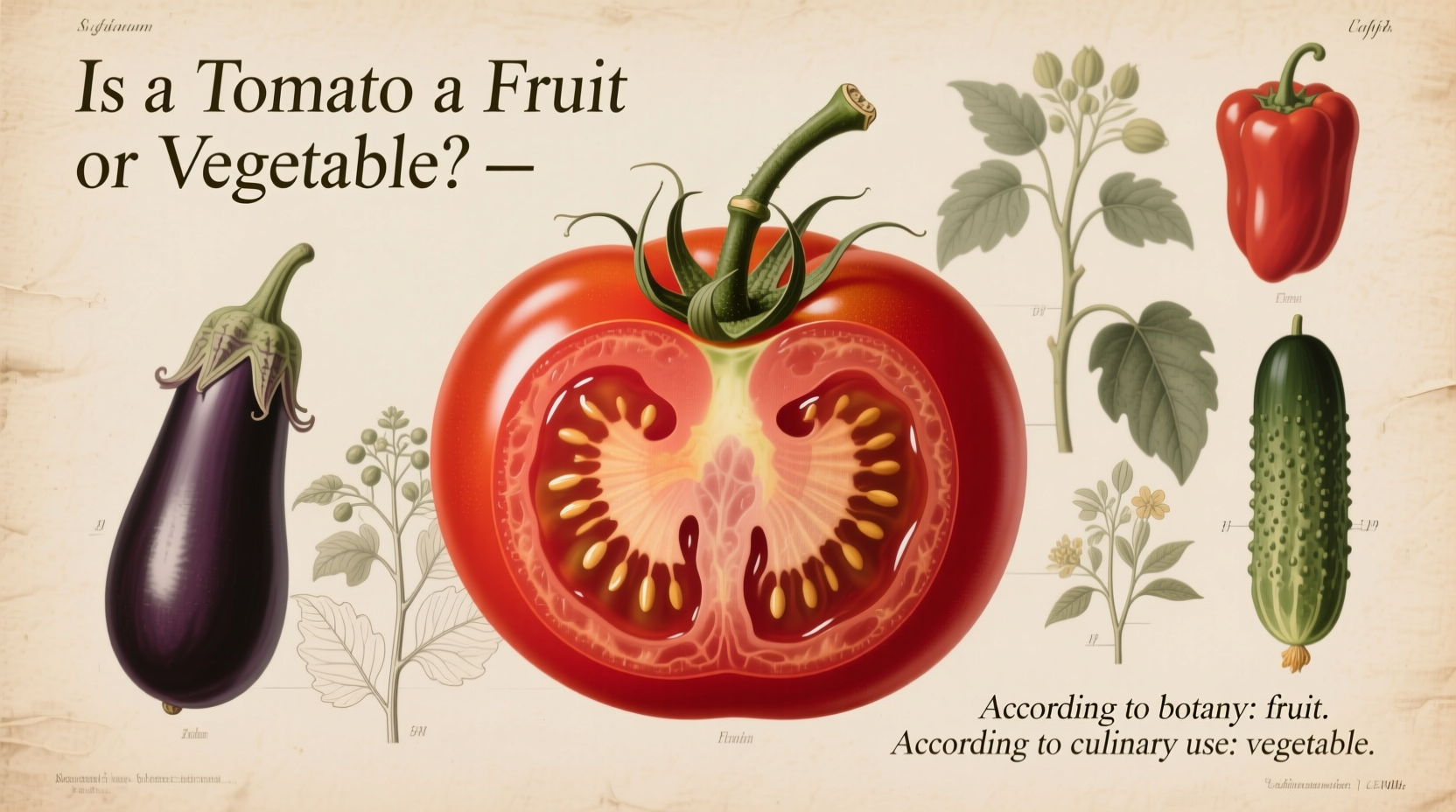Confused by conflicting answers on whether a tomato is a fruit or vegetable? You're not alone. This common kitchen conundrum has sparked debates across forums like Yahoo Answers for years, with many users sharing incomplete or inaccurate information. Let's cut through the confusion with science-backed facts that clarify exactly where tomatoes stand in both botanical and practical contexts.
The Botanical Reality: Why Tomatoes Are Scientifically Fruits
From a strict botanical perspective, tomatoes unquestionably qualify as fruits. In plant biology, a fruit is defined as the mature ovary of a flowering plant, typically containing seeds. Tomatoes develop from the flower of the Solanum lycopersicum plant and house numerous seeds within their fleshy interior—meeting the precise scientific criteria for a berry-type fruit.
This classification places tomatoes alongside cucumbers, peppers, eggplants, and squash—all botanically fruits that are commonly mistaken for vegetables in culinary settings. The confusion arises because our everyday culinary categories don't always align with scientific botanical classifications.
Historical Context: The Supreme Court Decision That Changed Everything
The tomato's dual identity reached legal prominence in the 1893 U.S. Supreme Court case Nix v. Hedden. At the time, U.S. tariff laws imposed duties on imported vegetables but not fruits. Importers argued tomatoes should be classified as fruits to avoid these taxes, while customs officials maintained they were vegetables.
| Year | Event | Classification Outcome |
|---|---|---|
| 1883 | U.S. Tariff Act implementation | Vegetables taxed, fruits exempt |
| 1893 | Nix v. Hedden Supreme Court ruling | Tomatoes classified as vegetables for tariff purposes |
| 1948 | U.S. Department of Agriculture standards | Tomatoes grouped with vegetables in nutrition guidelines |
| Present | Modern culinary practice | Tomatoes treated as vegetables in cooking contexts |
The Court unanimously ruled that while tomatoes are botanically fruits, they are "usually served at dinner in, with, or after soup, fish, or meats as a principal dish," aligning them with vegetables in common usage. Justice Horace Gray wrote: "Botanically speaking, tomatoes are the fruit of a vine, just as a cucumber, green pepper, or eggplants, but in the common language of the people, all these are vegetables which are grown in gardens, and are usually served at dinner in, with, or after the soup, fish, or meats which constitute the principal part of the repast, and not, like fruits, generally as dessert."

Why Culinary Professionals Treat Tomatoes as Vegetables
Chefs and home cooks consistently categorize tomatoes as vegetables because of their flavor profile and culinary applications. Unlike sweet fruits typically served as desserts, tomatoes offer a savory, acidic taste that complements main dishes rather than concluding meals. The USDA's FoodData Central groups tomatoes with vegetables in nutritional databases due to their typical usage patterns and nutrient composition.
This practical classification affects how we use tomatoes in cooking. Consider these culinary applications that demonstrate why tomatoes function as vegetables in the kitchen:
- Used in savory dishes like sauces, stews, and soups
- Rarely served as dessert or with sweet preparations
- Typically harvested and used while still firm and less sweet
- Complement proteins and starches rather than serving as standalone sweet items
When Classification Matters: Practical Implications
Understanding whether to treat a tomato as a fruit or vegetable becomes crucial in specific contexts:
Cooking and Recipe Development
When developing recipes, recognizing tomatoes' acidic nature (pH 4.3-4.9) helps balance flavors. Their acidity works like citrus in many applications, making them functionally similar to fruits in preservation techniques like canning, while their savory profile aligns them with vegetables in meal construction.
Gardening and Plant Care
Gardeners benefit from knowing tomatoes are fruits because this affects cultivation practices. Fruit-bearing plants often have different nutrient requirements than vegetable crops, particularly needing more phosphorus during flowering and fruiting stages.
Nutritional Planning
The USDA includes tomatoes in the vegetable group for dietary guidelines, recognizing their typical consumption patterns. However, their nutrient profile shares characteristics with both categories—high in vitamin C like many fruits, but low in sugar compared to typical dessert fruits.
Debunking Common Misconceptions from Yahoo Answers
If you've searched "is tomato a fruit or vegetable yahoo answers," you've likely encountered numerous oversimplified or incorrect explanations. Let's address the most persistent myths:
- Myth: "Tomatoes were reclassified as vegetables by the government" Fact: The Supreme Court ruling applied only to tariff classification, not botanical science
- Myth: "Botanists consider tomatoes vegetables" Fact: All botanical references consistently classify tomatoes as fruits
- Myth: "The tomato confusion applies to all similar produce" Fact: While cucumbers and peppers share this dual identity, the legal precedent specifically addressed tomatoes
When to Use Each Classification Appropriately
The tomato classification question isn't about finding one "correct" answer, but understanding which framework applies to your specific need:
- Use fruit classification when: Discussing plant biology, seed propagation, or botanical characteristics
- Use vegetable classification when: Planning meals, following recipes, discussing culinary techniques, or addressing nutritional guidelines
This contextual approach resolves most confusion. As food historian Sarah Johnson explains: "The tomato's dual identity isn't a contradiction but rather a reflection of how language evolves to serve different human needs—scientific precision versus practical kitchen application. Understanding both perspectives makes you a more informed cook and consumer."
Conclusion: Embracing the Dual Identity
The question "is a tomato a fruit or vegetable" ultimately has two correct answers depending on context. Botanically, tomatoes are fruits without question. Culinary and legal traditions treat them as vegetables for practical reasons. This distinction isn't unique to tomatoes—many foods exist in this classification gray area, including cucumbers, zucchini, and bell peppers.
When encountering conflicting information on platforms like Yahoo Answers, remember that both perspectives can be valid within their appropriate contexts. The most informed approach recognizes that language serves different purposes in science versus everyday life, and neither classification negates the other.











 浙公网安备
33010002000092号
浙公网安备
33010002000092号 浙B2-20120091-4
浙B2-20120091-4